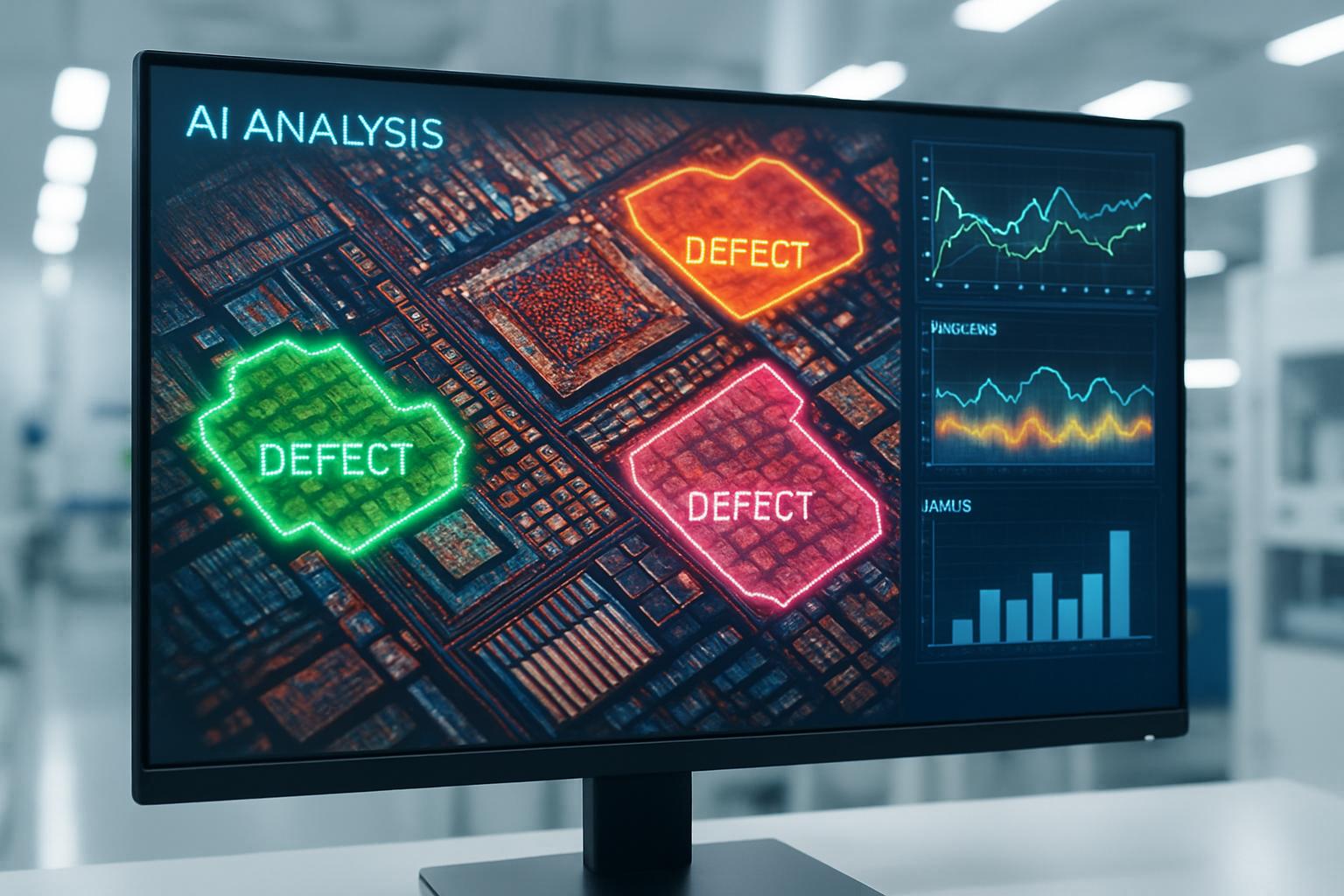
AI CERTS
4 hours ago
RAPTOR Sets New Bar for AI Quality Control in Chip Security

Moreover, the experimental pipeline finishes verification in under 100 milliseconds.
This speed makes the concept attractive for inline AI quality control at final test.
In contrast, traditional geometric metrics often miss subtle nanoparticle shifts.
The global semiconductor market needs such robust, rapid, and accessible defenses.
Additionally, the counterfeit chip economy already exceeds 75 billion dollars annually.
Industry executives want scalable solutions that integrate with existing chip manufacturing standards.
Growing Counterfeit Chip Crisis
Counterfeit electronics undermine military, automotive, and medical reliability.
Meanwhile, component complexity rises, obscuring visual inspection.
Non-destructive inspection remains the preferred safeguard during distribution.
However, classical optical checks rely on laborious manual comparison.
X-ray imaging ML offers deeper insight yet struggles with nanoparticle scale features.
Consequently, counterfeiters exploit those blind spots to introduce cloned dies.
RAPTOR targets that vulnerability by fingerprinting unique gold nanoparticle distributions.
These fingerprints are physically unclonable functions, resisting replication attempts.
Counterfeits evade many current screening workflows.
Nevertheless, RAPTOR promises automated recognition, setting the stage for deeper technical discussion.
Inside RAPTOR Methodology Insights
RAPTOR stands for residual, attention-based processing of tampered optical responses.
Firstly, dark-field microscopy captures scattered light from gold nanoparticle arrays.
Semantic segmentation isolates particle centers and radii within 27 milliseconds on test hardware.
Subsequently, the algorithm ranks the 56 largest particles.
Pairwise distances form a matrix that encodes spatial relationships.
Attention layers highlight correlated pattern shifts between reference and test samples.
Residual convolutions refine those signals before a multilayer perceptron produces the binary verdict.
Therefore, the complete verification loop finishes around 80 milliseconds in laboratory trials.
Such responsiveness aligns with modern assembly takt times.
As a result, RAPTOR exemplifies next-generation AI quality control for sub-micron structures.
The pipeline combines optics and deep learning into a compact routine.
Consequently, quantitative benchmarks deserve closer review.
RAPTOR Benchmark Numbers Explained
Peer-reviewed experiments evaluated RAPTOR under several worst-case tampering scenarios.
Moreover, the classifier achieved headline 97.6% accuracy across 10,000 image pairs.
Classical Hausdorff distance methods trailed by more than 40 percentage points.
In contrast, Procrustes alignment scored 60%, reinforcing RAPTOR’s superiority.
Average verification error sat below 2.4%, reflecting robust generalization.
Furthermore, throughput estimates show potential for real-time AI quality control during gate or package screening.
Researchers tested the model using a single consumer GPU, suggesting further speed headroom.
Nevertheless, absolute timing depends on microscope resolution and preprocessing hardware.
Table 1 in the paper details hardware specifications for replication.
RAPTOR’s accuracy and latency surpass rival geometry metrics.
However, benefits gain meaning only when mapped to production value.
Key Advantages For Fabricators
Fabricators chase yield while minimizing inspection budgets.
Therefore, RAPTOR offers several concrete AI quality control advantages over legacy options.
- High 97.6% accuracy lowers escape rates and warranty claims.
- Sub-100-millisecond cycle supports inline non-destructive inspection without slowing handlers.
- Optical setup avoids ionizing radiation, unlike X-ray imaging ML stations.
Additionally, the distance-matrix representation is lightweight, easing secure cloud transfer.
Cryptographic hashing of matrices can integrate with existing chip manufacturing standards.
Consequently, supply-chain auditors gain objective pass-fail logs for each unit.
Professionals can enhance their expertise with the AI Quality Assurance™ certification.
RAPTOR aligns inspection speed with production flow while improving decision confidence.
Subsequently, attention shifts to integration hurdles that could delay adoption.
Industrial Adoption Hurdles Ahead
Proof-of-concept status remains the foremost challenge.
Nevertheless, Purdue has filed patent applications to attract commercial partners.
Packaging engineers must embed gold nanoparticle layers without contaminating sensitive nodes.
Meanwhile, dark-field microscopes require vibration isolation, raising capital expenditure concerns.
X-ray imaging ML rigs already inhabit some lines, complicating equipment selection.
In contrast, RAPTOR could piggyback on existing optical sorters with minor modifications.
Another barrier involves long-term stability under humidity and thermal cycling.
Furthermore, downstream traceability systems must handle new data formats safely.
Effective AI quality control governance will influence procurement decisions.
The research team encourages collaboration to define universal chip manufacturing standards for optical PUFs.
Scaling RAPTOR demands concerted engineering across equipment, materials, and IT workflows.
Future academic and industrial studies are already addressing these gaps.
Future Research Directions Ahead
Researchers plan larger datasets featuring environmental aging and mechanical stress.
Additionally, hybrid models will fuse X-ray imaging ML and optical signals for ensemble voting.
They also target real silicon wafers, moving beyond discrete test coupons.
Moreover, edge accelerators could shrink verification latency below 50 milliseconds.
Material scientists will evaluate non-destructive inspection durability under corrosive atmospheres.
Consequently, consortium pilots may establish baseline process windows and reporting templates.
These efforts intend to align RAPTOR with evolving AI quality control governance.
Continual iteration will refine performance and lower capital hurdles.
Therefore, stakeholders should monitor emerging benchmarks and pilot announcements.
Conclusion And Next Steps
RAPTOR pushes optical fingerprinting into mainstream AI quality control conversation.
Furthermore, its 97.6% accuracy challenges the best X-ray imaging ML benchmarks.
Consequently, enterprises can envision continuous, non-destructive inspection across assembly and depot stages.
Nevertheless, commercialization depends on harmonized chip manufacturing standards and capital planning.
Organizations preparing now can embed AI quality control metrics into supplier contracts.
Moreover, talent upskilling remains vital.
Professionals can validate their skills through the AI Quality Assurance™ program and lead future AI quality control deployments.
Adopting these innovations today secures tomorrow’s supply chains.
Therefore, subscribe for updates and stay ahead in AI quality control strategy.



